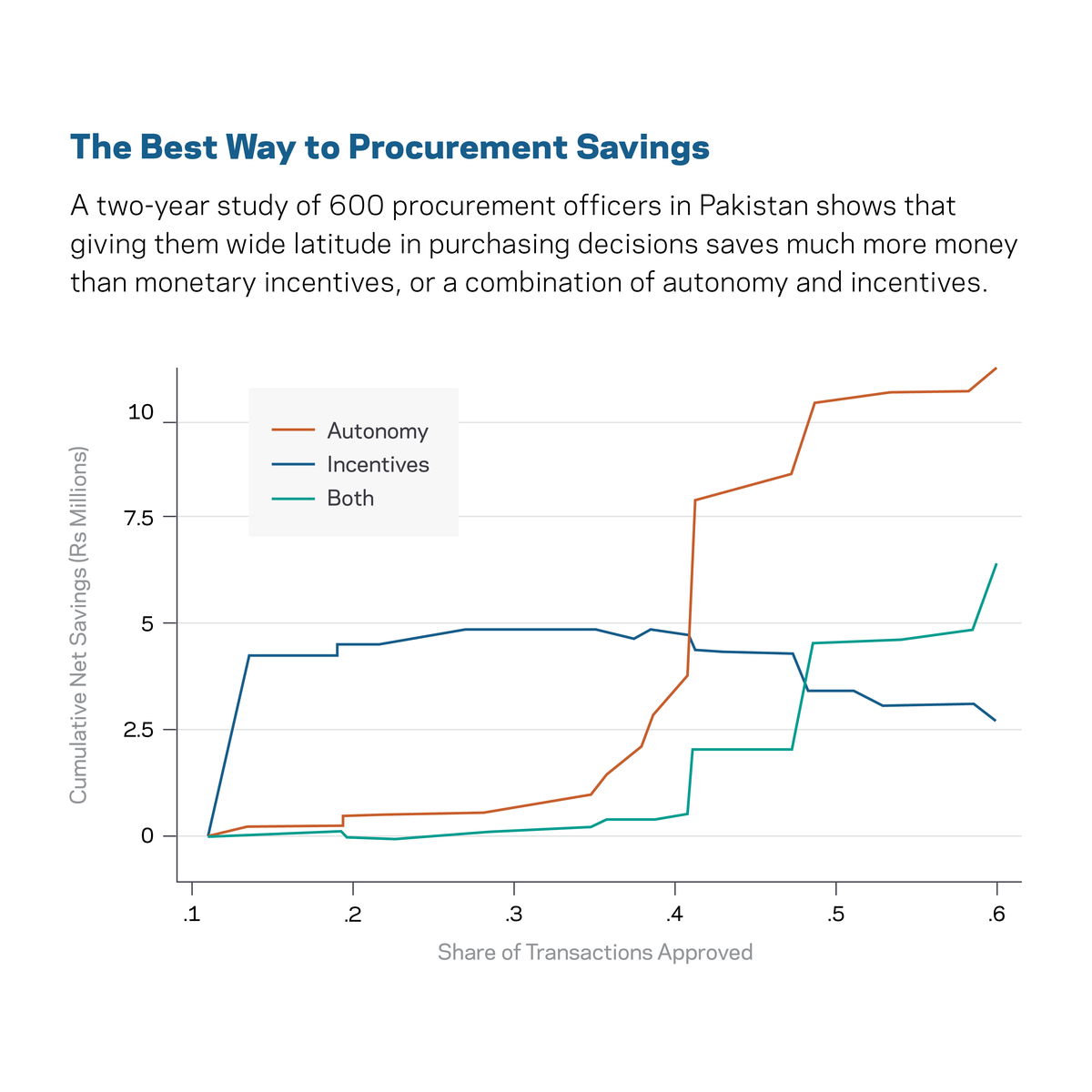Public procurement — the process by which governments purchase goods and services—accounts for approximately 12 percent of the world’s GDP. But too often, this process is mired in red tape, resulting in a lot of waste, inefficiency, and even corruption, particularly in developing countries. How can we make procurement more efficient so that governments will be able to do more with their money?
In “The Allocation of Authority in Organizations: A Field Experiment with Bureaucrats” Chazen Senior Scholar Andrea Prat and co-authors from Columbia University and the London School of Economics show that the power to improve the public procurement process may rest in the hands of procurement officers themselves. By giving these officers more autonomy, governments could potentially save billions of dollars and curb corruption in the process.
Research
In collaboration with the World Bank and the Government of Punjab, Pakistan, the researchers assessed thousands of purchasing decisions made by procurement officers (POs), who were given more responsibility over their actions (by shifting authority from an independent agency of the federal government known as the Accountant General’s office or AG) and incentivized the POs with rewards for spending less. Prat and his colleagues studied 600 procurement officers across 26 districts who made a total of 20,000 purchases over a two-year period, and their interactions with AG monitors. Officers were randomly placed into four groups:
- A control group
- An autonomous group in which officers were given more latitude in purchasing decisions
- A pay-for-performance group in which officers were given prizes, ranging from half a month’s salary to two months’ salary, for spending less on departmental and administrative purchases
- A group that received both greater autonomy and monetary incentives
Results
The study found that giving procurement officers more control over the process pays off. In fact, shifting authority to these frontline officers reduced the average prices paid for generic goods by 9% without reducing quality. According to the researchers, this intervention removes red tape and reduces long delays in monitor approvals, and more than offsets the loss of benefits that monitoring provides.
Incentives, on the other hand, showed little to no impact on savings, except when the monitor approved purchases more quickly. For instances in which monitoring is onerous, officers are too tangled up in red tape to do anything to improve their performance, even when offered a financial reward.

The effect of both treatments ultimately depends on the type of monitor assigned to each officer. The autonomy treatment delivered the most savings — up to 15% — when the monitor was more inefficient or delayed approvals. But when the monitor was effective and approved purchases more quickly, the pay for performance treatment delivered around 6% in savings.
The researchers stress that the optimal allocation of authority between agents at different levels of a hierarchy should be determined by their relative degrees of wastefulness. In essence, the more wasteful the mangers, the more savings that can be gained by relinquishing control to frontline personnel.
